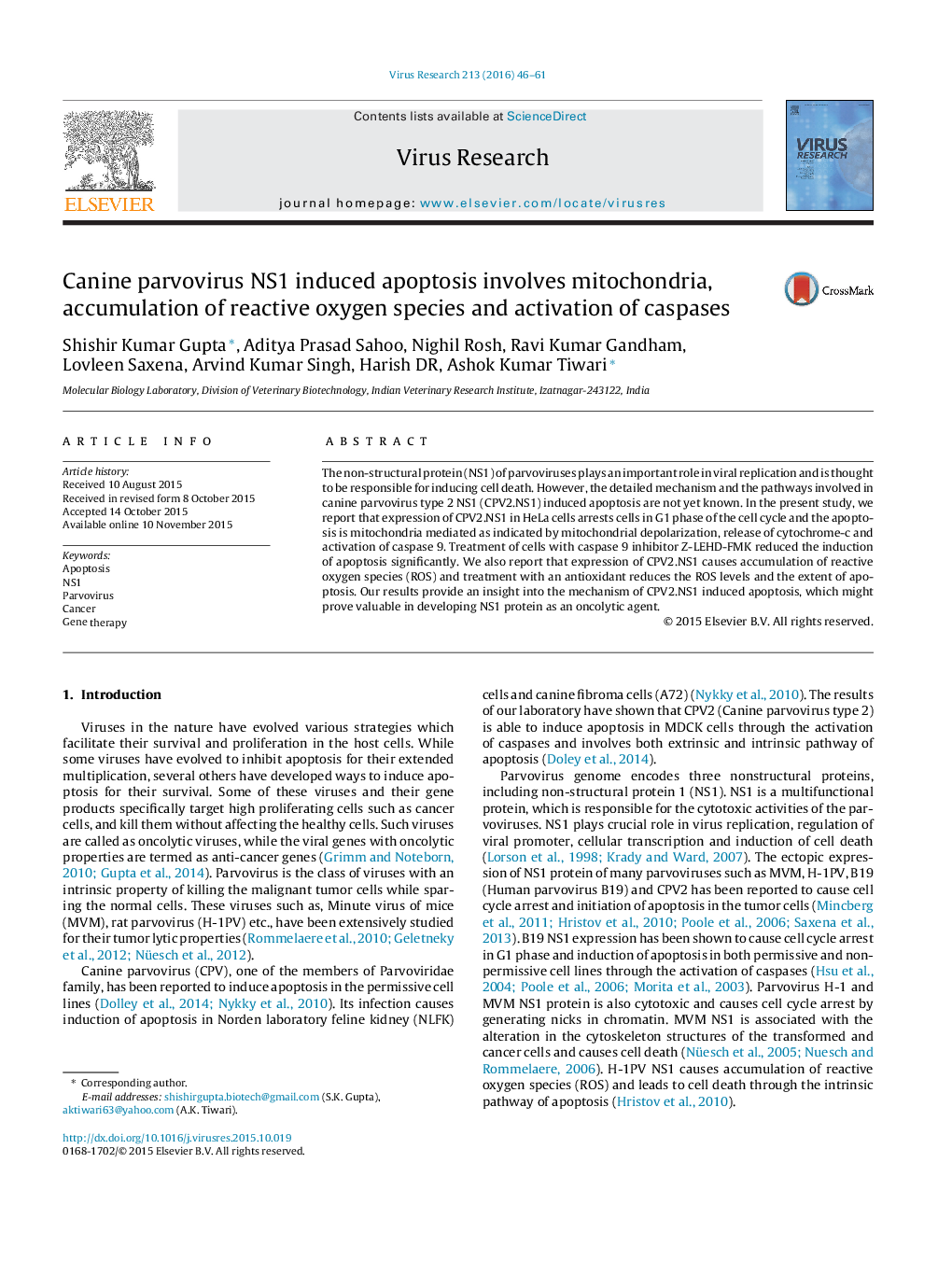| Article ID | Journal | Published Year | Pages | File Type |
|---|---|---|---|---|
| 3427894 | Virus Research | 2016 | 16 Pages |
•Canine parvovirus NS1 (CPV2.NS1) protein does not activate extrinsic pathway of apoptosis.•Expression of CPV2.NS1 results in mitochondrial depolarization and opening of permeability transition pores.•CPV2.NS1 induced apoptosis is mitochondria mediated i.e., it proceeds through intrinsic pathway.•Expression of CPV2.NS1 also causes accumulation of reactive oxygen species.•Inclusion of an anti-oxidant in the medium reduces the extent of apoptosis.
The non-structural protein (NS1) of parvoviruses plays an important role in viral replication and is thought to be responsible for inducing cell death. However, the detailed mechanism and the pathways involved in canine parvovirus type 2 NS1 (CPV2.NS1) induced apoptosis are not yet known. In the present study, we report that expression of CPV2.NS1 in HeLa cells arrests cells in G1 phase of the cell cycle and the apoptosis is mitochondria mediated as indicated by mitochondrial depolarization, release of cytochrome-c and activation of caspase 9. Treatment of cells with caspase 9 inhibitor Z-LEHD-FMK reduced the induction of apoptosis significantly. We also report that expression of CPV2.NS1 causes accumulation of reactive oxygen species (ROS) and treatment with an antioxidant reduces the ROS levels and the extent of apoptosis. Our results provide an insight into the mechanism of CPV2.NS1 induced apoptosis, which might prove valuable in developing NS1 protein as an oncolytic agent.
